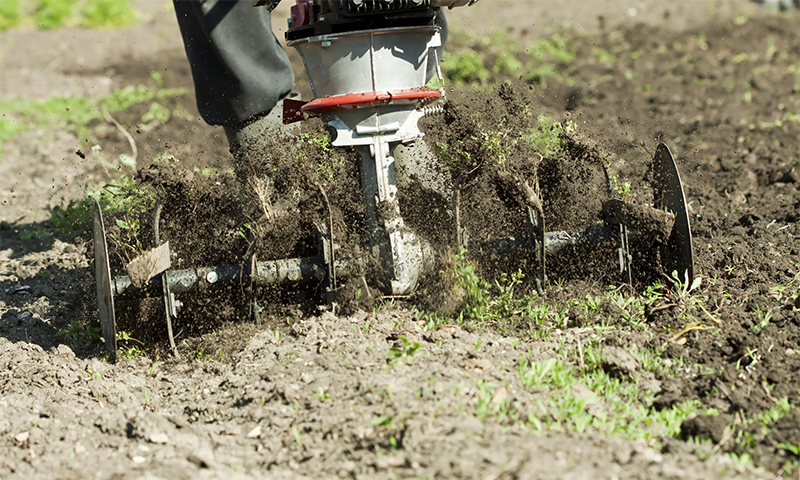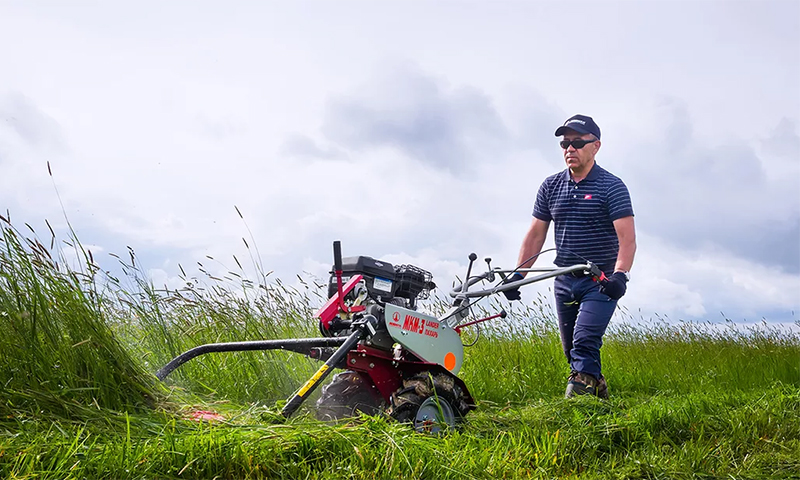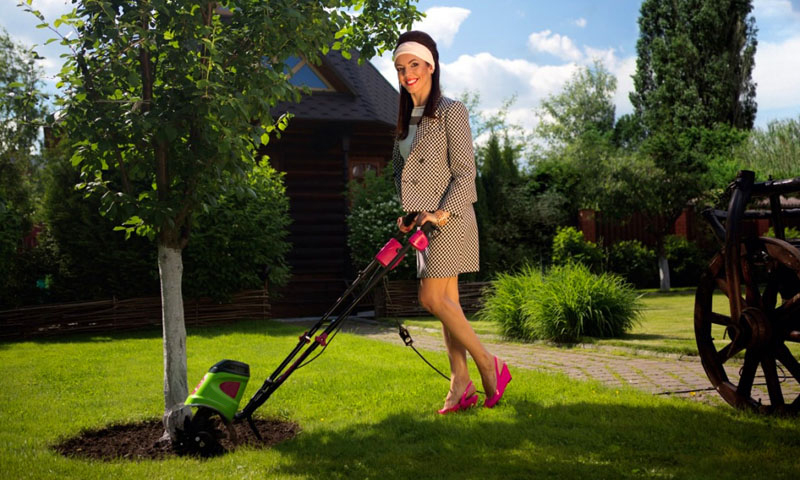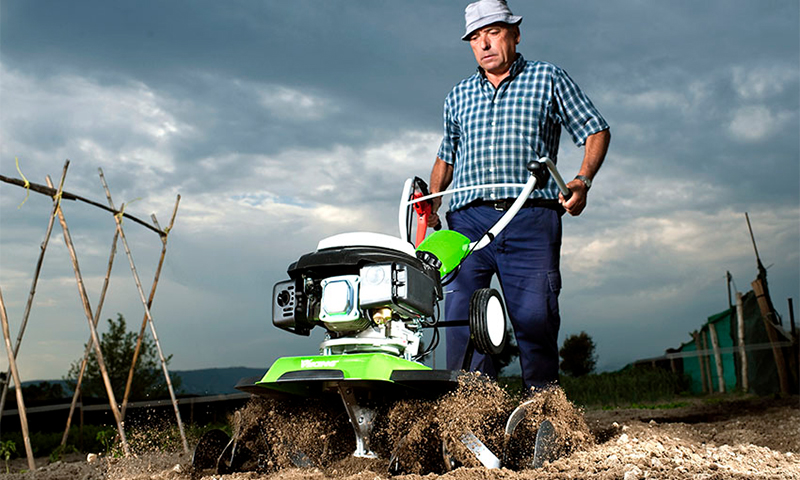Physical labor on a small piece of land is useful and brings satisfaction to most housewives. But when the area of the garden increases significantly, or there are many other things to do and there is not much time left for the beds, the motor-cultivator helps a lot. Compact garden equipment has a simple device and allows you to perform various manipulations on the garden, without spoiling the manicure. The possibilities of maneuvering and power of each device are different, so we will help you figure out how to choose the right motor-cultivator for various tasks.

Content:
The best manufacturers of motor cultivators - which company to choose
If you want to choose a reliable tillage equipment and do not want to delve into its features, then the best models are among the industry leaders:
- Huter;
- Daewoo;
- Echo;
- Hyundai;
- Champion.
But it is better to get acquainted with specific devices more closely in order to understand their capabilities and areas of application. For this prepared rating of cheap motor cultivators. In the same article we will discuss the value and range of parameters for the independent selection of each characteristic.
The principle of operation and the device cultivator

This garden equipment has a wide scope.
With its help you can:
1. Spud plant trunks in the garden;
2. Dig up a vast stretch of land;
3. Develop virgin soil;
4. Make furrows for planting potatoes;
5. Grind the soil for planting wheat;
6. Smash earth crust around trees;
7. Cut the beds.
The use of cultivators begins from a small piece of land in the yard or greenhouse, to spacious fields outside the city or on the farm.
You can work with equipment both young and old, men and women. This is a good help in old age, a reliable assistant for large volumes and a good inventory so as not to spoil the manicure and not to injure the skin on your hands.
The principle of the motor cultivator is based on the rotation, which provides a gasoline or electric motor. This element is located at the top of the body. From him, through the gearbox, torque is transmitted to the shaft.
There are several possibilities for using this rotation:
1. Active - various mills are connected to the shaft, which rotate at high speed. This allows you to load into the soil, cut through it, loosen and additionally, push the whole machine further. The wheels in this case play only an auxiliary, supporting role. So, you can remove the crust from the surface of the soil, grind the top layer under the seed planting or mix the ground with sprinkled fertilizer. Still mills are used for cleaning weeds.
2. Passive is the connection of the wheels to the shaft so that the movement is carried out due to the operation of the engine. And on the brackets the static equipment is suspended: a plow, a potato digger or an excavator. This allows you to dig up the garden for the winter, develop virgin soil, pour the earth to the roots, wrap up the seed pits and create furrows for planting. Some models have on one shaft and a wheel and a mill that simultaneously pushes the machine forward and cultivates the soil.
Control of a motor-cultivator is carried out by handles on which the button of gas and switches of speeds are located. The frame is made of metal to withstand the weight of the equipment and the pressure when pressed.
The size of the wheels may be different, due to their functions (supporting or basic).Many models have protective wings to prevent dust and soil from flying into the operator.
The main components and parts of the cultivator are:
1. Engine;
2. Gearbox;
3. Gas tank;
4. Shaft with cutters;
5. Wheels;
6. Frame;
7. Control levers;
8. Bracket for fixing machining elements.
Types of motor cultivators
Electric
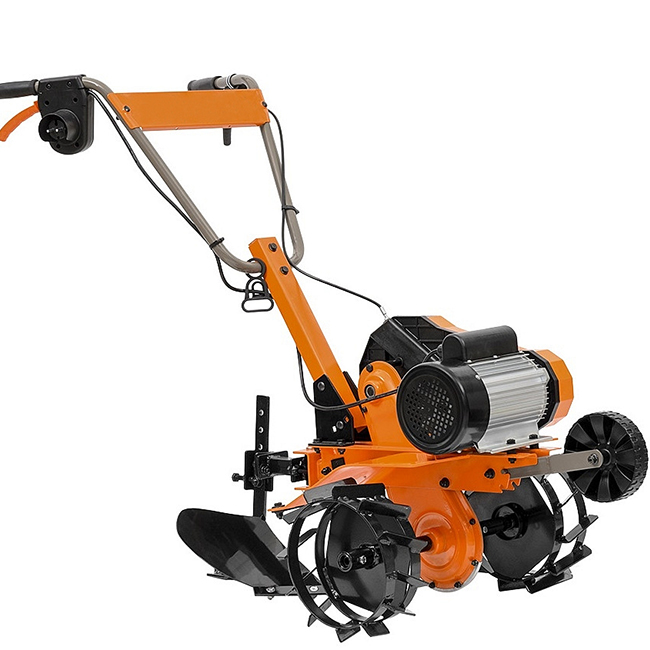
Here the action takes place at the expense of an electric motor powered by a household network. Work is carried out with carrying on 20-50 meters that limits the area of use of the device to giving or a personal plot near the house.
The devices are endowed with sufficient power to cope with the volume of the garden up to 10-15 acres, if there is electricity nearby. Weight models varied and you can pick up equipment for women and the elderly.
Advantages:
- quiet engine operation;
- no emissions to the atmosphere, which allows the use in greenhouses;
- small weight;
- wide range of power;
- small body size;
- folding arms;
- plowing depth suitable for melons and root crops.
Disadvantages:
- working area is limited by the length of carrying;
- there is a danger of hitting the cable;
- small wheels are harder to move in large blocks.
Petrol

Everything works here thanks to the internal combustion engine, which is 2 and 4-stroke. From its power depends on the speed of rotation and the depth of plowing. To start the required fuel in the tank and a certain amount of engine oil.
The weight of these cultivators is much more than others, which is better suited for use by men. Since the device is completely autonomous, it can be used in large gardens, far beyond the city.
Such models are acquired for farming. With their help, it is realistic to process up to 30-40 acres of land and more.
Advantages:
- wide plowing width range;
- the gearbox transmits rotation without slipping;
- high power;
- you can plow, develop virgin soil, plant;
- various options for setting the wheels;
- doing work away from home.
Disadvantages:
- large mass;
- loud engine operation;
- additional vibration from the power unit;
- traffic fumes.
Rechargeable
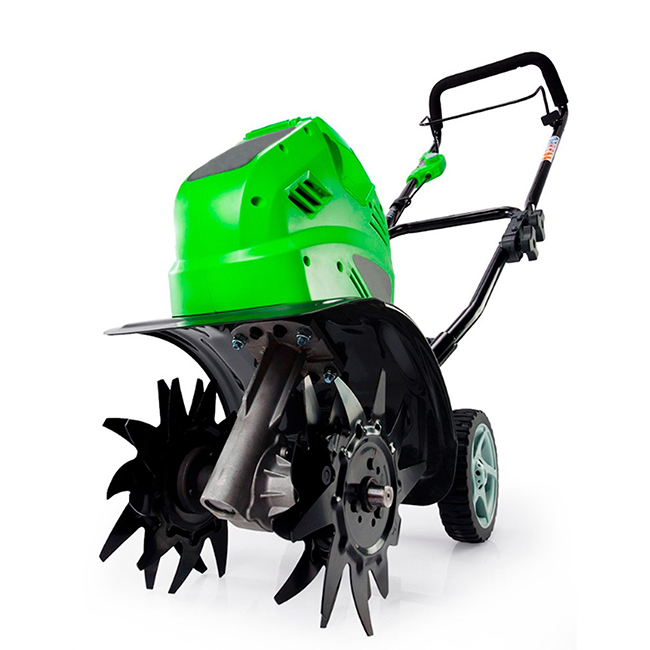
Rotation is provided by an electric motor that receives energy from a battery located on the body. Models have a very compact design and high maneuverability.
They are easy to manage in narrow beds, cultivate non-planted areas in flowerbeds, cultivate the soil in a small greenhouse. Low weight makes them very comfortable for girls and seniors.
Advantages:
- compact;
- very quiet work;
- a light weight;
- you can work in the greenhouse (no gas);
- high maneuverability;
- folding handles;
- the device does not depend on the remoteness of the power supply network;
- It can be cultivated at a time up to 300 mm wide.
Disadvantages:
- high price;
- require recharging;
- not designed for a large area;
- few options with speeds.
Cultivator selection parameters
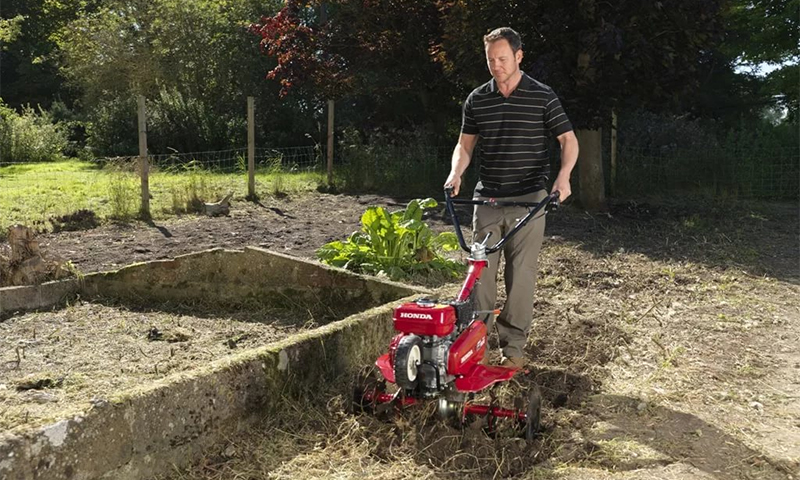
Power
This characteristic is prescribed in two standards:
1. Horsepower at petrol units (from 1 to 7 hp);
2. Watts for electric models (from 0.6 to 5.2 kW).
If there isn’t enough power, the cultivator will quickly use up its working life from overloads and there may be slippage at a great depth of plowing. When the power reserve is superfluous, it does not give any advantages, but only takes a large amount from the family budget.
1. To cut small beds near the house is enough 0.6-1.3 kW. Such a device will cope with the required depth and grind the top layer of soil.
2. Working all summer in the garden of 10-15 acres is convenient with a power of 2-3 kW for electric models or 3-4 hp in gasoline.
3. Farm activity is performed mainly on liquid-fuel devices with a capacity of 5-7 hp.
Engine
1. Petrol models are autonomous and have a wide power range. Due to the considerable depth of immersion in the soil, they can uproot virgin soil, plow large fields or cut long grooves.This is practical in the presence of a large vegetable garden (15-30 acres) or its distance from the house. Buy such models and professional farmers.
2. Electric motors of motor cultivators are powered from a power outlet or battery. Quiet work and the absence of harmful emissions allow them to work in the garden under the open windows of the house or in the greenhouse.
Engine tact (for petrol models)
1. Working for two cycles implies supplying the mixture of gasoline and oil to the combustion chamber immediately and drawing air through the suction hole. After mining, the burned gases exit through the opposite side of the housing to the outside. Such a system is easy to maintain and has enough power to uproot weeds, develop virgin soil or plow.
2. 4-stroke models have a more complex structure due to the separate supply of fuel, oil and valve systems with adjustable air inlet and outlet. This gives stable turns and good traction, which is important for the work of the cutter for leveling the surface, mixing the fertilizer or loosening.
Plowing depth
Manufacturers indicate the capabilities of the device for immersion in the soil. This is governed by the diameter of the cutter and the figures are from 110 to 350 mm.
It is necessary to choose the maximum value based on the type of soil and the proposed work:
1. To remove the crust around the trunks of trees or cut small beds enough 100-150 mm.
2. Planting of root crops, hilling and mixing of fertilizers are carried out at a depth of 180-220 mm.
3. The development of a pristine and grassy area requires large values of 280–350 mm, since weeds grow deeply.
Cultivation width
Size, captured in width, is proportional to the length of the shaft under the attachment of the cutter and the shape of the latter. Varies the parameter from 180 to 1050 mm. Performance of a motor-cultivator and its maneuverability depends on it.
1. To plow or cut furrows for planting in a spacious garden you need machines with a width of 500-1000 mm. The shoulders of such plantations rarely have a fence directly from the developed black soil and there is enough space on the edge of the garden to turn the overall equipment. Moreover, the larger the land area, the longer the cutters should be in the grip. This will save you from going back and forth and save time and effort.
2. Work on a limited space (greenhouse, small beds, combined flower beds, narrow strips of land along the fence) need not wide motor-cultivators that are able to work the soil, and it will be easy to deploy and continue to work in the other direction.
Mass of the device
The power of the engine affects the depth of plowing, but the weight of the device affects the ease of operation. The range of this characteristic can be from 7 to 90 kg. The heavier the model, the more functional and productive it is.
1. Women and the elderly, to work in flowerbeds or in a greenhouse, will be suitable as a motor cultivator up to 10-15 kg, which they will be able to independently bring, run and reach after loosening.
2. For regular work in the summer cottage of 10 acres, an apparatus weighing 15-30 kg is needed, and it is better for men to manage it.
3. Garden equipment for commercial activities (farm, plowing gardens for hire) weighs 40-90 kg. Such units are able to pull wide plows and dive deep into the ground for quality loosening.
Availability speeds
1. Some models of motor cultivators are able to move only forward. This is considered one speed and allows you to pull trailed inventory or move on the cutters around the garden. When you reach the edge of the site, you need to manually extract from the depth and turn. The larger the diameter of the cutters, the harder it is to do, so devices with the same speed will suit women and the elderly, with a small depth of plowing (up to 120 mm).
2. One at the front and rear speeds on the device make it possible to drive independently using the power of the power unit. So, it is easy to turn around at the edge of the vegetable garden surrounded by a fence and continue plowing in another direction. This is practical in greenhouses or fenced narrow areas.
3. Two front and two rear speeds significantly increase the functionality of the motor-cultivator: they are easy to control and maneuver in different areas, as well as free the cutter from entangled roots. Such models should be used for weeding large gardens or developing virgin soil.
4. Professional activity requires even greater functionality, which is possible with three-speed motor-cultivators, where low revolutions allow digging hard ground, medium ones plow and mix well, and high shears cut the crust and prepare the ground for planting.
Pen type
To control the garden equipment using the handle on the frame. But when putting the cultivator into storage, the protruding arms take up a lot of space in the storage room or utility room. It is inconvenient to transport such equipment in the trunk of a car.
To solve such problems, they produce models with folding handles, which are exposed and fixed with clamps, and after work are doubled under the frame of the device. This is useful for those who have little storage space or often have to carry a cultivator.
Milling speed
In addition to engine power, there is also an indicator of the speed of rotation of the cutter connected to the gearbox. Its speed affects the tillage.
1. If the cultivator is acquired for preparing the land for bedding or breaking the crust in flowerbeds, then high rates of 300 rpm are important.
2. If the main activity is planting seeds, then a cutter speed of 200 rpm is sufficient.
3. Digging gardens is good at 150 rpm.
It is worth remembering that high speed is associated with increased vibration and load on the hands. Long work at 300 revolutions per minute does not work, so they are used in small areas.
Diameter and wheel position
Although the wheels of a motor-cultivator play an auxiliary function, ease of movement on the surface depends on their size. The larger the diameter of the chassis circumference, the easier it will be to move the device on soft ground and overcome obstacles.
1. If you plan to use for beds, where there are no large blocks, then you can choose small models with wheels of 90-110 mm.
2. Work in the greenhouse 5x5 m, for growing tomatoes, will require movement on wheels 150 mm.
3. Cutting furrows for planting potatoes or digging require large wheels of 200 mm or wheelless models (detachable), where the body is held and moved on the blades of the cutters.
What motocultivator choose

1. To work in a greenhouse or processing beds, an accumulator model without exhaust gases is needed, with an immersion depth of 195 mm, 145 mm wheels, a processing width of 200-300 mm, a rotation speed of 300 rpm and a mass of 12-15 kg, which will be convenient for women and children
2. To process a small garden under the house (up to 15 acres), network models of a wheelless type are acquired, with a plowing depth of 200 mm, a width of 300 mm, a weight of 7–9 kg, a rotation of the cutters of 300 rpm, and a power of 750–1000 W.
3. A large vegetable garden in the field (20-30 acres) is treated with petrol motor-cultivators with a capacity of 4 hp, a plowing depth of 260 mm, a mass of 34 kg, a four-stroke engine, a mill speed of 150 rpm, with 1 front and 1 rear speeds and a wheel diameter 120-150 mm. It is good to have one support wheel in front and two on the sides. Plowing width 550-600 mm.
4. Commercial activity is carried out with the equipment equipped with an internal combustion engine, with a capacity of 7 hp, working on four cycles, with a plowing depth of 300 mm, a mass of 59 kg, a rotation speed of 160-180 rpm, a working width of 950 mm and a wheel diameter of 150 -170 mm. It is desirable to have 3 speeds forward and 1 backward.
How much is a motor cultivator

1. To work in a greenhouse or on beds it is necessary to have a battery model for 12,000 rubles.
2. To care for a small garden in the country with the help of a network motor-cultivator they buy equipment for 5000-10000 rubles.
3. A large vegetable garden in the field needs to buy a gasoline model of average power for 9000-20000 rubles.
4. Farm activity is carried out on very powerful motor-cultivators, which cost 20000-40000 rubles.
It will be interesting to friends too




